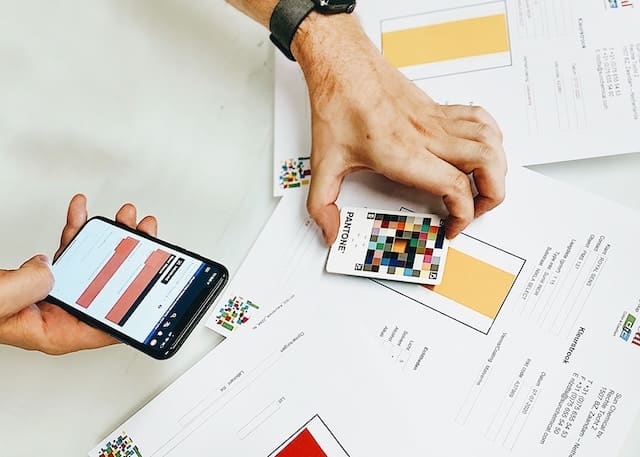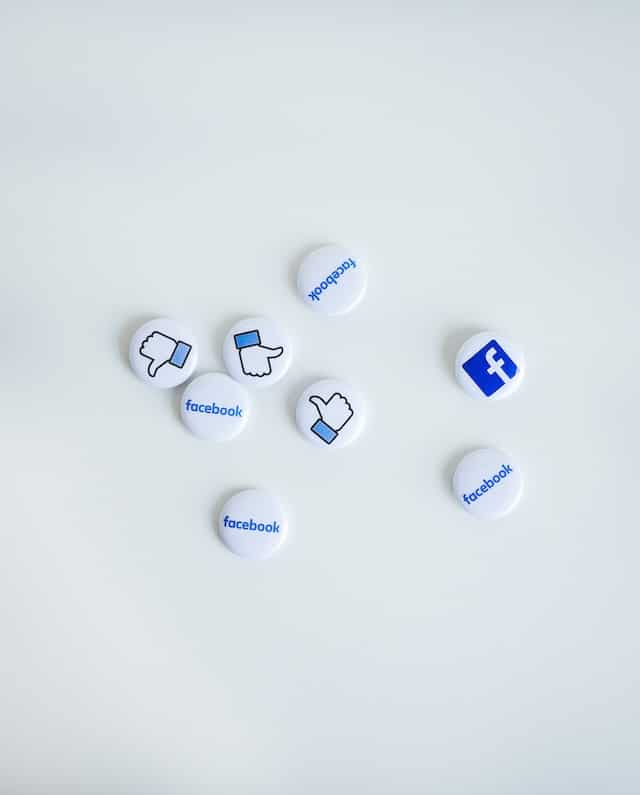Colours possess a remarkable ability to evoke emotions, shape perceptions, and influence our choices. In the world of graphic design, understanding colour psychology is essential for creating visually captivating and impactful designs. Let’s jump into the fascinating realm of colour psychology and its practical application in graphic design, shedding light on how colours can significantly impact audience engagement.

Colours are perceived and processed by specialised cells called cones in the human retina. These cones are sensitive to different wavelengths of light. When light enters the eye, it is absorbed by these cones, which send signals to the brain. The brain then interprets these signals as specific colours based on the combination and intensity of the cone activations. This process allows us to perceive and differentiate between various colours.
Colour theory is a framework that explores how colours interact, harmonise, and create visual impact. It encompasses principles and elements that guide the use of colours in art, design, and other creative disciplines. Understanding colour theory is crucial for graphic designers as it helps them make informed decisions about colour selection and composition.
While the science of it all is interesting the psychological aspect comes into play through the mental associations people have towards colours. It is important to remember that these associations can vary due to cultural and societal influences, personal experiences, and the context in which the colour is used. Despite this, there are many colour associations that are globally recognised, here are some examples for ya:
- Red can signify emotions such as passion, love and anger while also having associations such as power, strength and danger.
- A sense of harmony, balance and growth can be signified by the colour green. It can also create the association of nature and health or wealth and stability.
- Blue brings about a sense of tranquillity and serenity with associations such as trust, professionalism and wisdom. In certain contexts, it can evoke a sense of coldness ad sadness.
As mentioned earlier, colours can evoke specific emotions and associations so making sure a brand’s colour scheme has associations that relate to the brand is crucial. Each brand has unique characteristics and values it would like to convey. Using colours that align with the brand is a useful tool for conveying the brand’s personality and message to its audience. Consistency in colour usage across brand content helps to reinforce brand recognition as it creates a sense of familiarity and trustworthiness amongst its consumers.
- Coca-Cola is synonymous with the colour red and links to its brand identity. Red evokes a sense of excitement and passion which aligns with Coca-Cola’s message of joy and celebration.


- Sleek and minimalist is what Apple brings to the table and features white as a prominent brand colour. White conveys simplicity and innovation, reflecting the brand’s message of elegance, ease of use and cutting-edge technology.
Facebook’s choice of blue represents trust, reliability and safety. It conveys their approach to creating a safe and friendly social networking experience.

The strategic use of colours in design can guide attention and elicit emotional responses. Techniques such as colour contrast, focal points, and colour combinations contribute to creating hierarchy and impact. Colour contrast involves pairing distinct colours to draw attention to specific elements. By employing high contrast between foreground and background colours, essential information stands out. Focal points can be established using bold or vibrant colours, capturing immediate attention and becoming the visual centre of interest.
Colour combinations evoke emotions and establish visual hierarchies. Harmonious combinations create balance and tranquillity, while contrasting combinations generate excitement and energy. Warm colours convey warmth and urgency, while cool colours evoke calmness and professionalism. Strategic use of these techniques helps designers effectively communicate messages and enhance the overall design impact.
Colour has the ability to convey specific messages by tapping into the psychological associations people have with them. Designers can intentionally select and use colours that align with the intended message to invoke the desired emotional response in different contexts. It is important to consider the target audience, cultural background and the specific goals of the design to ensure a compelling message and response.

Creating harmonious colour palettes and utilising colour contrast is an important aspect of readability and visual impact in design. Harmonious colour palettes ensure that colours work well together, creating a visually pleasing and cohesive composition. By carefully selecting colours that complement each other, designers can create a sense of balance and harmony, enhancing the overall aesthetic appeal. Utilising colour contrast helps improve readability and directs the viewer’s attention to important elements. By pairing contrasting colours, such as light and dark shades or complementary hues, designers can create visual hierarchy, emphasise key information, and ensure that the content is easily distinguishable. The combination of harmonious colour palettes and effective colour contrast leads to designs that are engaging and optimised for communication.
Another practical and vital tip is the use of colour accessibility. It is incredibly important to ensure inclusivity and provide equal access to information for users with visual impairments. Creating colour schemes that have sufficient contrast and are easily distinguishable by individuals with colour vision deficiencies or low vision. Tools such as colour contrast checkers, like WebAIM’s Contrast Checker or Adobe Colour, can help assess the contrast ratios between foreground and background colours to meet accessibility standards, such as WCAG guidelines. Additionally, resources like the Colourblind Web Page Filter can simulate various types of colour vision deficiencies, aiding designers in understanding how their designs may appear to users with different visual abilities. By incorporating colour accessibility into design considerations and utilising these resources and tools, designers can ensure their creations are inclusive and accessible to all users.
Everyone should embrace experimentation, testing, and iteration when it comes to colour choices to optimise the emotional impact of their designs. Recognising that colour perception can vary among individuals and across different contexts, we should be open to exploring various colour options and their potential effects on the target audience. It is valuable to gather user feedback through surveys, usability testing, or A/B testing to understand how colours are perceived and whether they stimulate the desired emotional responses. Additionally, leveraging data-driven decision-making, such as analysing user engagement metrics and conversion rates, can provide insights into the effectiveness of colour choices. By combining creative experimentation with user feedback and data-driven insights, individuals can make informed decisions about colour selection that maximise the emotional impact and enhance the overall effectiveness of their designs.
By leveraging the principles of colour psychology in graphic design, everyone can unlock the potential to create designs that not only look visually stunning but also resonate emotionally with the audience. Understanding the science and emotional impact behind colour, and then implementing it strategically can empower creators to spur desired emotions, convey messages effectively, and leave a lasting impact on their viewers. So, go ahead, experiment with colours, and unleash the emotional power of your designs!






